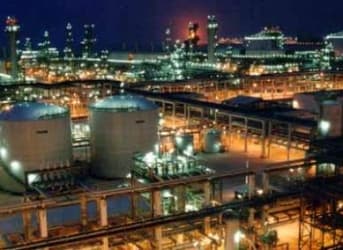Lower oil prices have killed off major plans for liquefied natural gas exports from Canada’s west coast.
On December 2 the state-owned oil company of Malaysia, Petronas, decided to shelve plans to build an enormous LNG export terminal in British Columbia, citing the falling price of oil. It is common for LNG contracts to be priced using a formula linked to the price of crude oil, so declining oil prices pushes down prices for LNG.
Petronas’ Pacific NorthWest LNG, as it was known, was a proposed $32 billion export terminal that would send LNG to Asia. The decision highlights how competitive global LNG trade has become, despite growing demand. Greenfield projects, such as Pacific Northwest LNG, face steep startup costs that become prohibitive when oil prices fall.
Related: Russia-China Deal Could Kill U.S. LNG Exports
Although low oil prices may have been the icing on the cake, Canadian LNG projects were facing serious obstacles before oil prices plummeted. There is stiff competition from a slew of LNG projects already under construction in the U.S. and Australia, which will come online much earlier than anything from British Columbia.
Several LNG export facilities in the U.S. are not starting from scratch, for example. The Sabine Pass terminal on the Gulf Coast and the Cove Point facility on the Chesapeake Bay were both originally constructed to import LNG rather than export. The original facilities were put on ice when the U.S. no longer needed LNG imports. Now, companies are retrofitting them to handle exports – a much cheaper process than building a new facility.
The indefinite cancellation of Pacific NorthWest LNG is a major setback for Canada’s plans to export natural gas. The move comes after BG Group abandoned plans to build a separate LNG export terminal on Canada’s west coast. Chevron is also in limbo with its Kitimat LNG project after its partner Apache pulled out.
The inability to break ground on a series of LNG export terminals is also a major blow to the province of British Columbia, which has banked on natural gas exports to meet certain budget objectives. B.C. Premier Christy Clark was originally very bullish on the industry, telling constituents that the province could become debt-free as a result of exports.
In 2013, Clark predicted that a full-fledged LNG export industry would be up and running by 2020, which would bring in $4.3 to $8.7 billion each year for the province. But her government made major concessions on taxes after several companies wavered on final investment decisions. Petronas even threatened to cancel its project because of proposed tax rates. In October 2014, Clark’s government proposed a 3.5 percent LNG tax, half of the original proposal.
The move was intended to offer a more attractive investment climate yet it was not enough to overcome high costs and falling oil prices.
Related: LNG-Dependent Japan Tries To Gain Leverage Over Pricing
The LNG market has dramatically changed since the B.C. government made its 2013 budget projections. Along with lower oil prices, the demand for LNG in Asia – the target market for Canadian exporters – looks quite a bit softer than it once did.
Japan is inching closer to a restart of its nuclear reactors, and as the world’s largest LNG importer, that could put a dent in demand. China’s economic growth is lower than expected, slowing the rise in energy consumption. And in what may have been unimaginable in 2013, China inked two major natural gas deals with Russia this year. If the deals are completed and the pipelines constructed, Russia could end up providing China with 17 percent of its natural gas needs by 2020. All of these trends narrow the market for Canadian LNG.
CBC News described British Columbia’s Premier Christy Clark as having an “almost singular focus” on LNG, but her government will need to find another silver bullet to fix provincial debt with LNG off the table for now.
By Nick Cunningham of Oilprice.com
More Top Reads From Oilprice.com:
- How Floating Technology Will Revolutionize LNG
- Petronas Threatens To Scrap Canadian LNG Terminal Over Tax Rates
- U.S. And Australia Chasing Qatar for LNG Supremacy


















